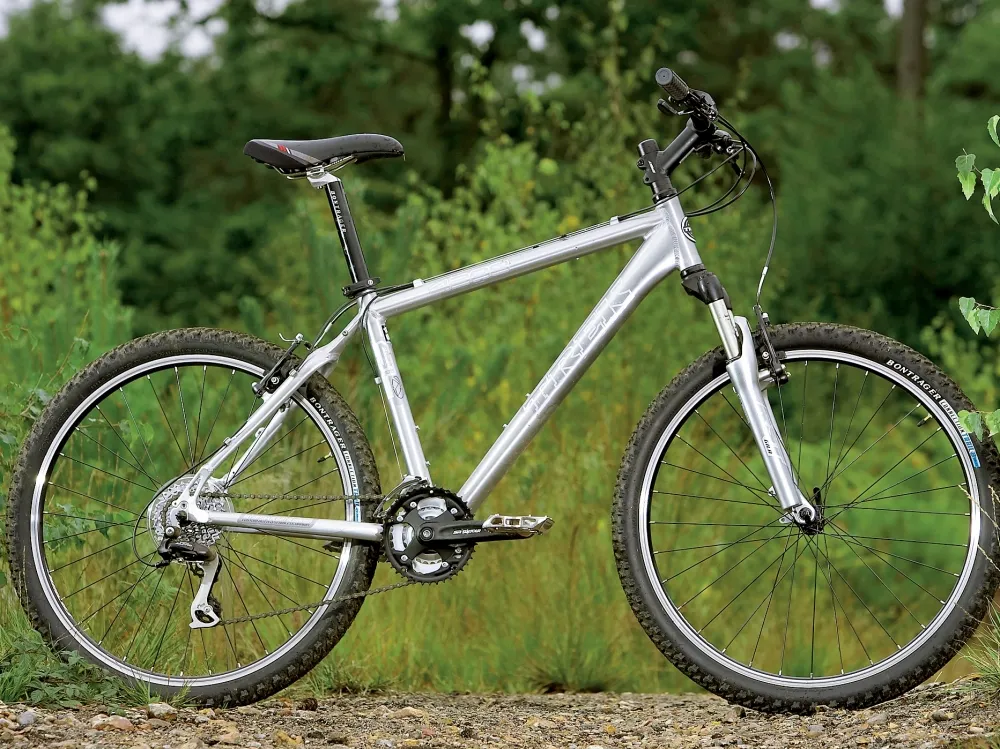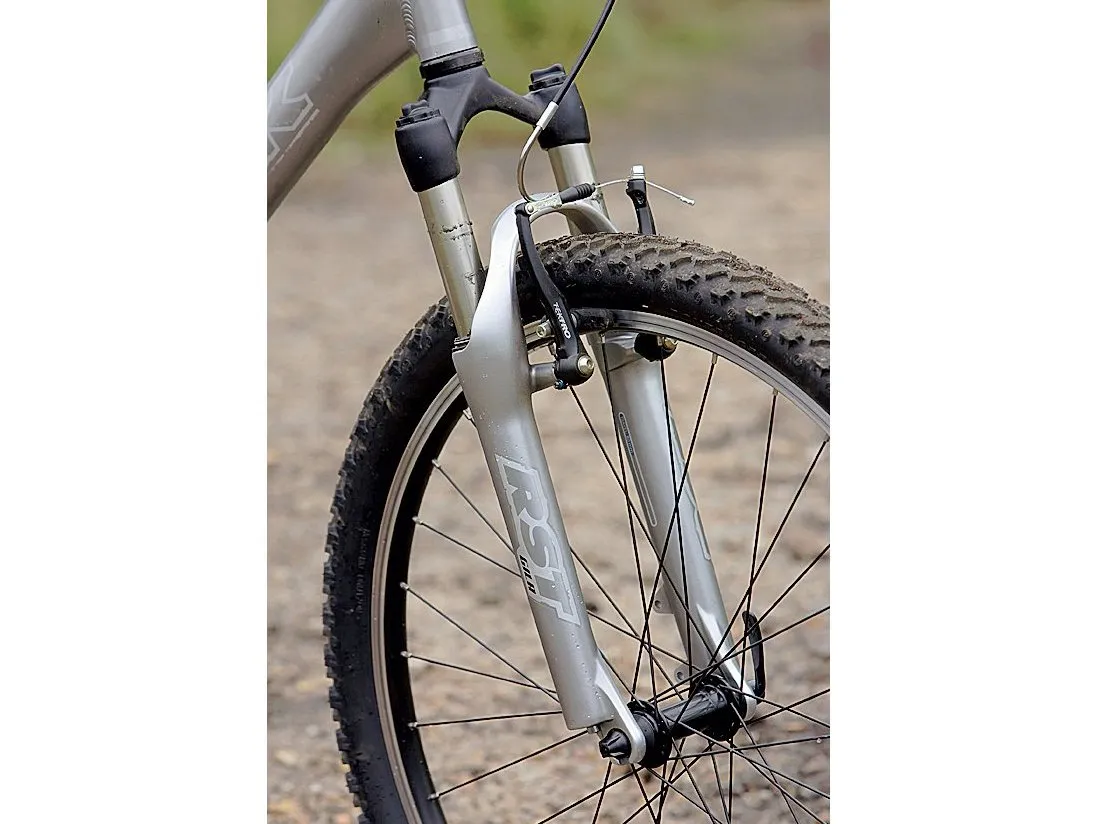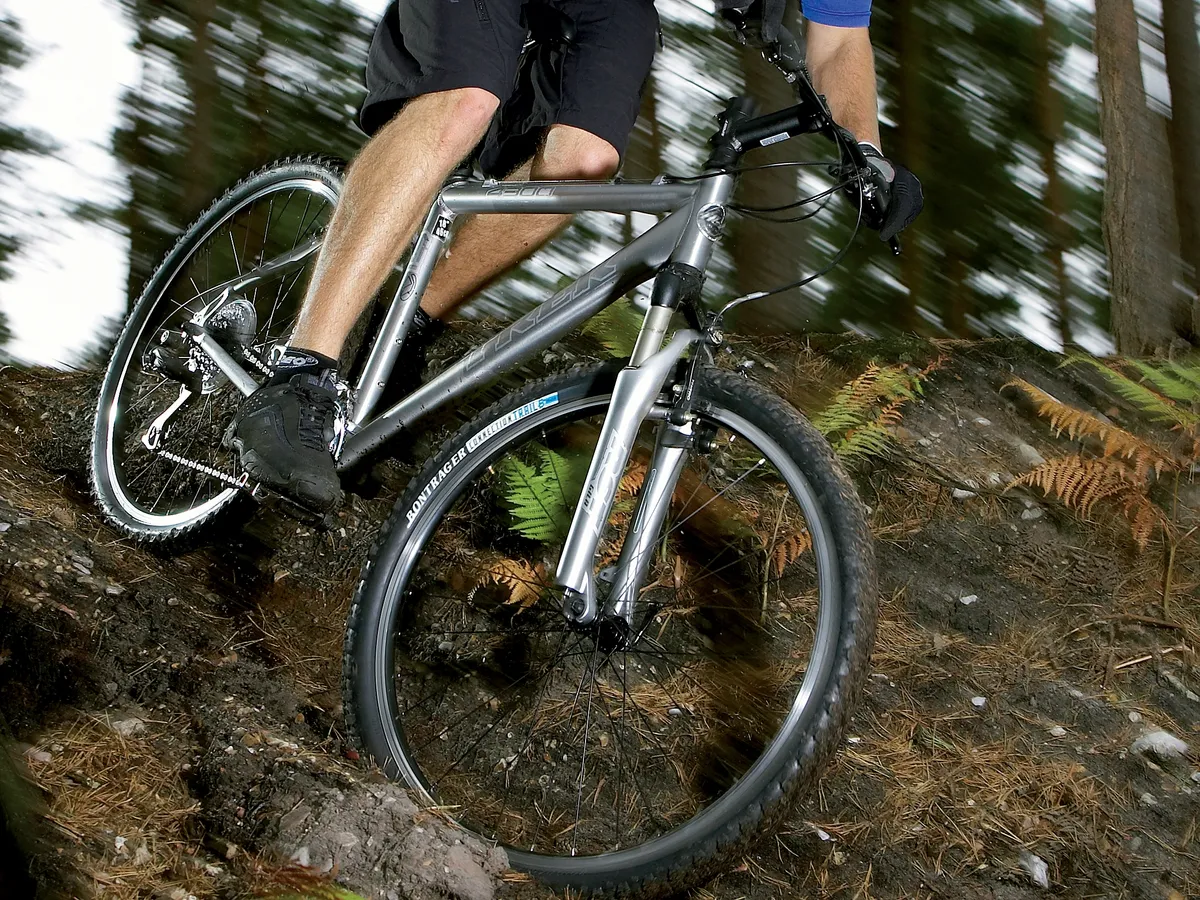Trek would probably win every test hands down if options were the main selling points. The 4300 is available in 13, 16, 18, 19.5, 21, 22.5 and 24in frame sizes. There's a £370 disc brake-equipped version too.
Look slightly up and down the range and you find an array of other numbered models with remarkably little to set them apart to the untrained eye. So, given that the 4300 looks like a steal for £300, we set out to find its strengths and weaknesses.
The chassis
We really like Trek entry-level frames - a few years ago, frames of this quality would have cost £300 without the rest of the bike. The butted aluminium tubes exhibit the features and fine detail you normally only find at much higher prices. We really like the bi-axially ovalised, hydroformed down tube and curvy wishbone seatstays.
There's also loads of mud room and useful features like rack mounts on the seatstays, two sets of bottle cage bosses and a big stack of stem height adjustment spacers. There are hose guides and brackets for disc brakes if you fancy upgrading, but the £370 disc version would be a better bet if you're that way inclined.
Inevitably at this price, the geometry is dead neutral and casually sporty rather than race influenced. The RST Gila fork provides a plush 80mm (3.1in) of travel, with very effective preload dials on top of the legs - useful if you're heavy, or if lots of your riding is on the road. Like most forks on bikes at this price, rebound damping is almost nonexistent and there's a thunk every time the fork re-extends quickly.
The detail
We had a few chain skipping problems with the SR Suntour crankset on the first ride: almost every time a lot of pressure was applied, typically on bumpy climbs, the chain slipped off the middle ring, once resulting in an unwelcome dive over the bar. We come across this occasionally on new bikes and we can't quite work out what causes it.
It seems to be something to do with new chains lifting slightly on new chainring teeth, and it rarely happens beyond the first ride. After this bedding-in period, the drivetrain was fine.
The distinct click shifts of Shimano's eight-speed budget combi shifters make them as beginner-friendly as anything on the market; they performed without fault with the Shimano Alivio gear mechs.
While disc brakes appeal to many riders looking at £300 bikes, we still tend to recommend rim brakes. They're lighter and they make price room for other more important parts upgrades. Also, they perform well enough unless you're regularly riding in very muddy conditions.
Most of the other finishing parts are Bontrager-tagged. The high-rise stem and low-rise 25in Crowbar handlebar work well together, the dual-compound grips are comfortable and the saddle is tough and comfy enough.
A long seatpost allows riders up to just over 6ft to fit the 18in bike. There's a decent set of wheels too: tough Bontrager Camino rims are laced to a Shimano rear hub and a no-name front model. The tyres are Bontrager's fast-rolling but grippy (in all but slippery mud) Connection Trail 2in treads.
The ride
We'd been hammering the Marin Northside Trail just before setting off on the 4300, and the Trek, at £200 less, was a bit of a surprise. It feels instantly faster than the Marin - well, it does on the way to the trails.
Its 12.8kg (28.4lb) weight and fast-rolling centre-ridge tyres means that on the road, on steady trails or on climbs, it's the fastest bike in this test. It's only when the going gets rough that it starts to feel a little out of its depth, and even then it's surprisingly good.
As with all £300 bike packages, it's the fork that sets the bike's limitations. Although a suspension fork allows you to hit stuff harder and faster than you would with a rigid fork, it starts to become a bit of a handful over a series of hard-edged bumps. This is because the untamed rebound comes through to the bar, so you need to keep your arms loose to absorb the aftermath of hits rather than the hits themselves. Once you get used to the fork's limitations, you'll learn to love the way the 4300 rides, though.
The handling is just the way it should be - conservatively neutral - and there's tons of ride position adjustment potential - the ideal confidence boost for relative beginners.
The frame would be good enough on a bike at twice the price, and the other low budget parts don't compromise the bike's performance. Steve Worland
Fantastic frame
Trek's size and resulting buying power allows them to build their lower budget bikes with excellent frames. It's unusual to see frames this good on £300 bikes, and it's worth bearing in mind if you see yourself upgrading kit at a later date. As always at this price, a fork with proper rebound damping would be the biggest improvement in performance terms.





